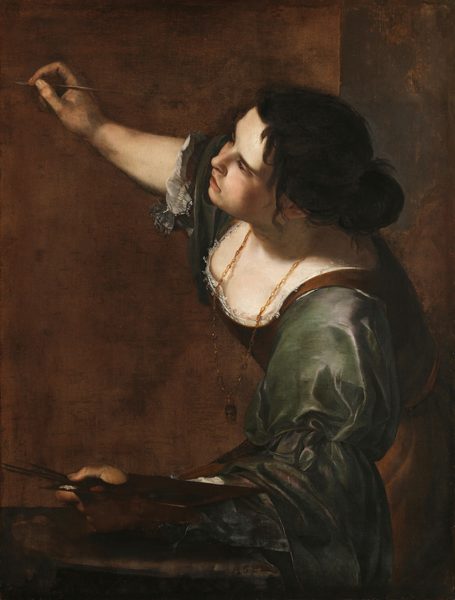
Artemisia Gentileschi’s self-portrait, Royal Collection

Artemisia Gentileschi (1593-1663) – Self‑Portrait as the Allegory of Painting (1638–39), oil on canvas, 101 × 73 cm, Royal Collection, Buckingham Palace, London.
Among the works that currently capture my attention for the book I am writing, The Creative Process: from Representation to Action, are certain paintings within paintings — including this self-portrait by Artemisia Gentileschi (1638–39, Royal Collection, Buckingham Palace, London).
In truth, it is far more than a mere self-portrait of Artemisia in her forties: it is also the allegorical figure of Painting itself. For this symbolic representation, Artemisia follows, to some extent, Cesare Ripa’s famous treatise, Iconologia, where Painting is described as “a beautiful woman, with abundant black hair, loose and entwined in various ways (the divine frenzy of the artistic temperament).” Yet Artemisia refuses the gag over the mouth (Painting is mute) — it will not be imposed on her.
What I particularly admire is the way Artemisia Gentileschi articulates her message through stylistic choices that make the work strikingly modern. The spareness — the canvas barely begun, the emptiness behind the artist — contributes to this sense of modernity while also distancing her from the workshop environment that might suggest the too-manual world of an artisan. This effect also contrasts with the richness of the sophisticated dress, in its iridescent fabric — the drappo cangiante, as Ripa calls it — which both demonstrates the painter’s skill and sets her further apart from a dirty studio.
A tightly controlled energy runs through the painting, in a dynamic that is one of suspended movement — the very acme of creative intensity. In this sense, the painting is baroque, as in its composition, where the whole weight of the body is carried on one side, in precarious balance: the instant of the artist’s gesture in action.
It is a manifesto-work. Artemisia Gentileschi takes a stand for the elevation of the artist’s status, above that of a mere artisan — even when the artist is a woman. The artist’s bold impertinence, in lending her own features to the allegory of Painting, is another way of declaring that her life is painting, and painting is her life.
